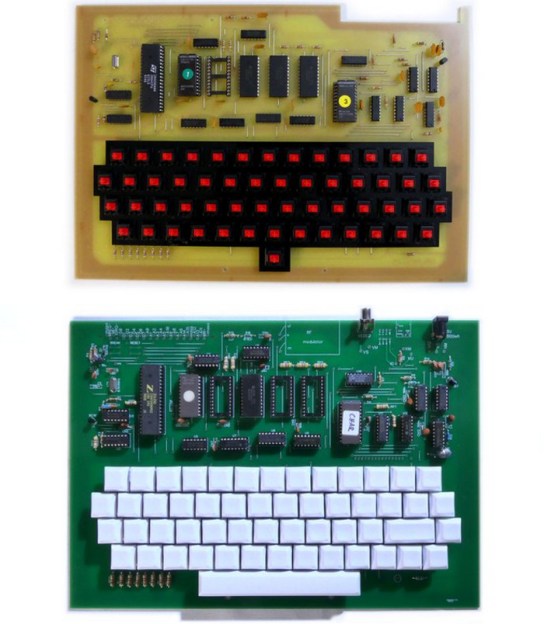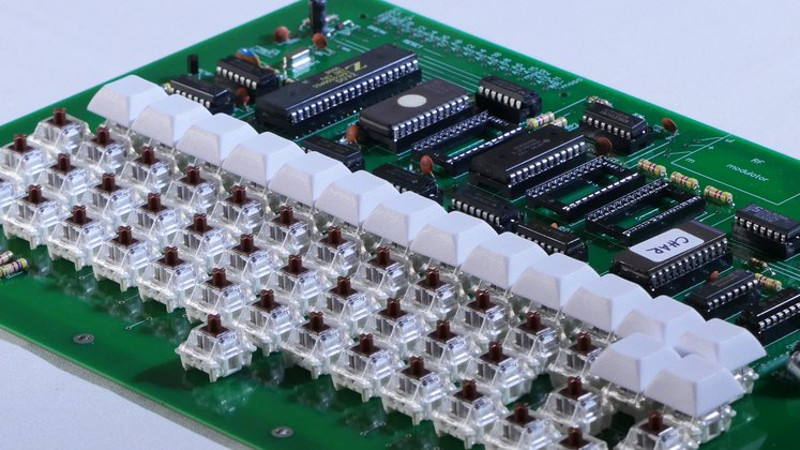One of the humbling things about writing for Hackaday is the breadth of experience among our colleagues, despite one’s own skills or achievements there is probably for all of us a level of impostor syndrome when we look at their work. This week provided a reminder of this, while taking a closer look at the crowdfunder for a documentary about the Galaksija, the Yugoslavian 8-bit computer from the 1980s designed by our colleague [Voja Antonić]. Not only will the documentary be produced, but also they are recreating the Galaksija as a kit, so you can experiment with this historic computer for yourself. The campaign has reached passed its goal a couple times over but still has a few days left, so jump in if you are interested.

With the advantage of being able to reach out to [Voja] as a colleague, it was time to secure the straight dope on the project. Though he’s not spearheading it, aside from appearing in the documentary he’s also produced the new Galaksija PCB to take advantage of double-sided manufacture and remove the wire links that were a feature of the original.
In that sense this isn’t so much a clone of the original as an updated version from the same designer, with only a few other updates such as key switches and connectors where the exact original component could no longer be sourced. A particularly fascinating side-tale comes from a reprint of the first Galaksija magazine. Photo-reproductions of the original printed pictures did not yield good results, so [Voja] built from scratch an entirely original Galaksija, carefully recreating the framing of each step shown in those original photos.
This project has faced its fair share of obstacles before launching on Crowd Supply, so it’s very good indeed to see it receive its funding with time to spare. We look forward to seeing the results, meanwhile you can see a promo video in Serbian with Youtube’s English subtitling below the break. You can read [Voja]’s writing on the machine in Hackaday articles past, but don’t miss the opportunity to meet him at a live event — he’s the mastermind behind a number of hardware badges at Hackaday events.
















Any chance the authors would share the gerbers from the original Galaksija?
There aren’t gerbers from the original, but the foils are available off the site: http://www.spetsialist-mx.ru/Galaksija/
Actually, I stand corrected… the very last link are gerber files.
Thanks for the remark, now you can download files here:
https://hackaday.io/project/6059-how-to-use-more-than-100-of-program-memory/files
The kit idea is amazingly cool, getting communist era computers in the west was of course impossible and today would be expensive so this is awesome for people in the west wanting to know “how the other half lived”. The Wikipedia article on the Galaksija says the video out is generated in software so how hard would it be to getting in running in North America in NTSC, or VGA or whatever? Hope this isn’t a stupid question.
Surely not hard, switching to NTSC is just a matter of timing recalculation (probably with different quartz frequency) and firmware upgrade. Monochromatic VGA would be even simpler, as it requires TTL outputs only.
I have built primitive VGA-to-RS170 adapters consisting just of resistors, (Rvid=47ohms, Rhs=Rvs=274ohms) without relying on the VGA card or external hardware to generate proper composite sync. I imagine the TV loses track of hsync while vsync is asserted, but I have not yet found a TV that objected
Hi Vojo. Will new kit work on NTSC out-of-the-box, or will adapter be needed? Thanks.
P.S. I bought one kit. Can’t wait to get my hands on it :)
Hi Miroslav, it generates the composite signal with PAL timings only, but most monitors and TVs today accept both standards (yellow cinch).
@Voja: Thank you very much. Hvala Vam za sve.
I’m currently building one in the US, and I’m using a $15 RCA to HDMI converter that automatically switches between PAL/NTSC (https://www.amazon.com/gp/aw/d/B07XKG8HBJ?psc=1&ref=ppx_pop_mob_b_asin_title). You could probably make small adjustments to the circuit/logic to get “native” NTSC signal, but using an adapter like this works well. More info in my Twitter thread about the build: https://twitter.com/mejs/status/1312494663035543552?s=19
With my build mostly finished, I’ve “integrated” this converter with the rest of the board with surprisingly good results: https://twitter.com/mejs/status/1322385699862138881
Being a monochrome signal, I think that mos of TV sets will sunc on a 50 Hz signal, and a judicious recalibration of the vertical hold trimmer will make a monitor switch between 50 and 60 Hz. At leats the Philips BM 7502 could be regulate halfway. Other CRT TV sets are more modern so they switch between PAL, SECAM and NTSC colour systems.
has anyone built a cyberdeck version of this? not everyone has space for a crt.
There is a single chip version, with FPGA, developed and built by Dusan Grujic. Input device is PS2 keyboard, and the output is VGA monitor. Detailed documentation and design files at
http://galaksija.petnica.rs/index.php/Specification
Thanks, but i’ve seen it already. Through hole construction is a better match to my soldering skills.
And, don’t forget Avian’s CMOS Galaksija. https://www.tablix.org/~avian/blog/articles/galaksija/
Tehere is also Galaksija based on GAL16V8. http://www.galaksija.org/pdf/
I read about it in a local magazine Računari u vašoj kući (Computers in your home, http://pc.sux.org/indexRA.html).
There were some pretty insane laws in ex-Yugoslavia (for example, to protect local computer industry (?!?) importing computers was forbidden. No heavy taxes, no high import duties, straight out forbidden. I got my first ZX Spectrum from my aunt that bought it in Trieste,Italy and smuggled it across the border to Yugoslavia (now Slovenia). Although smuggling was national pass-time in Slovenia, she wasn’t really into it and was a nervous wreck when she got back. Took half an hour to find power supply and cassete cables becuse she hid them next to the engine because “all the wires look like they’re part of the car”. Bless her!
What these guys did at the time was nothing short of amazing and all perfecly legal.
Am I the only one who thinks the upper (old) version looks nicer somehow?
Don’t get me wrong, I value the idea of an updated version and a double sided PCB totally makes sense. It’s just that from an emotional point-of-view, the upper version is more appealing somehow. Not sure why, though. :(
PS: I never owned such a computer.
Actually I think top marks to the double sided version, as Voja has silk-screened the wire links on where the original had them, so at a glance the layout looks identical. Really clever!